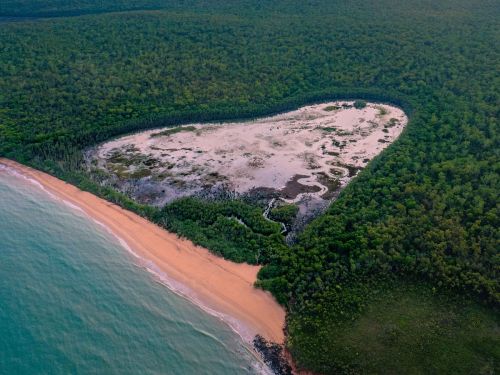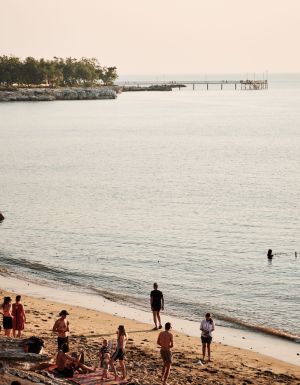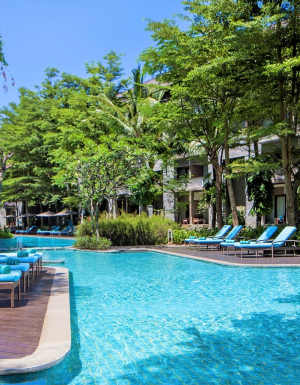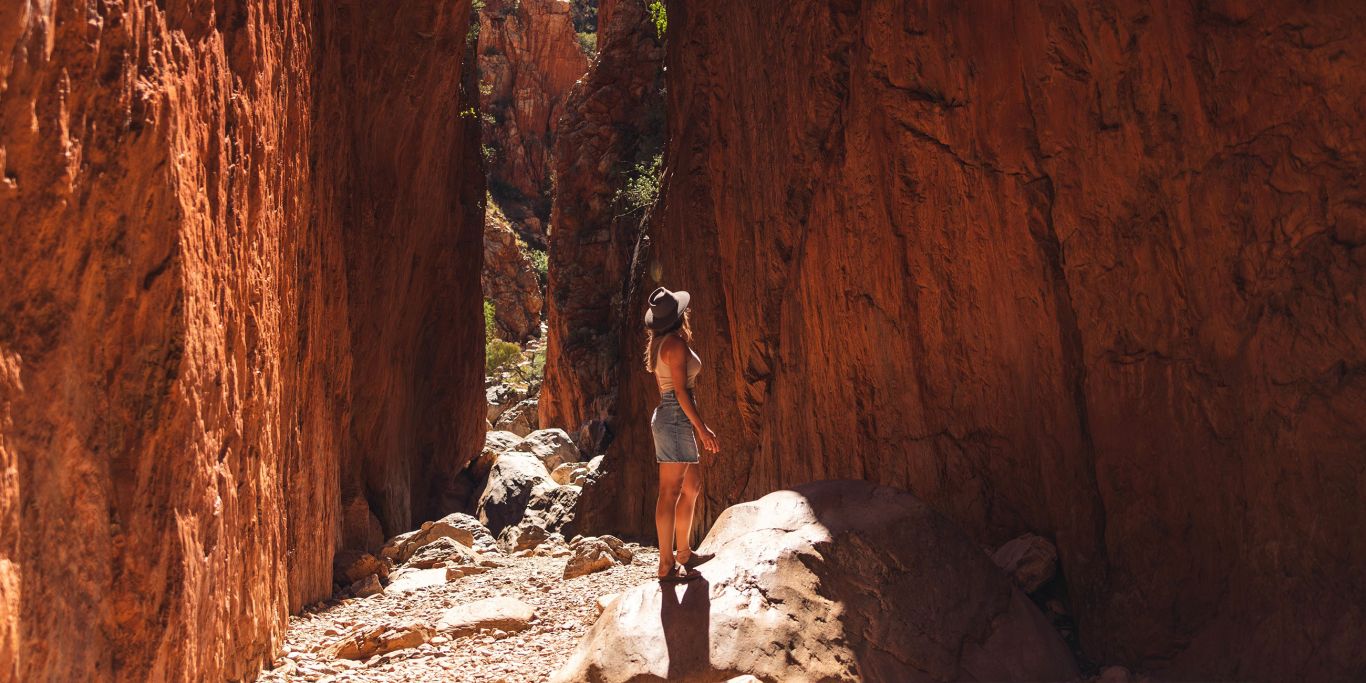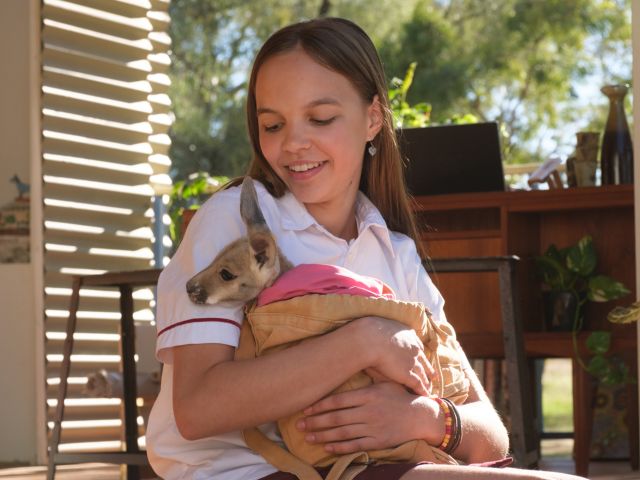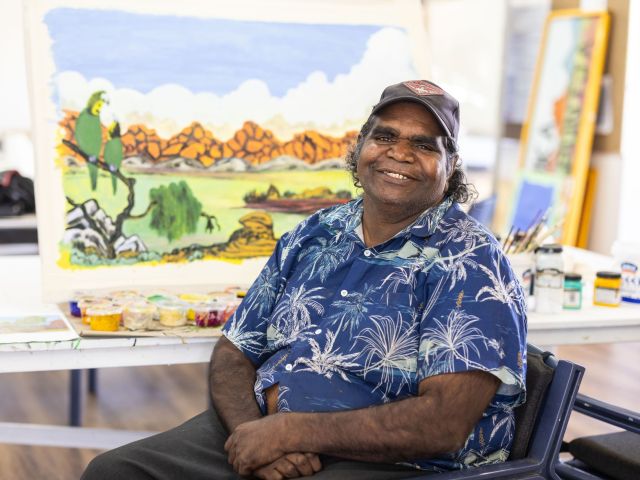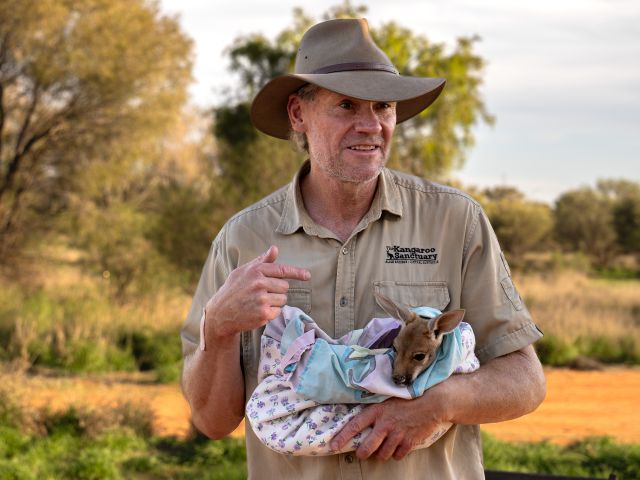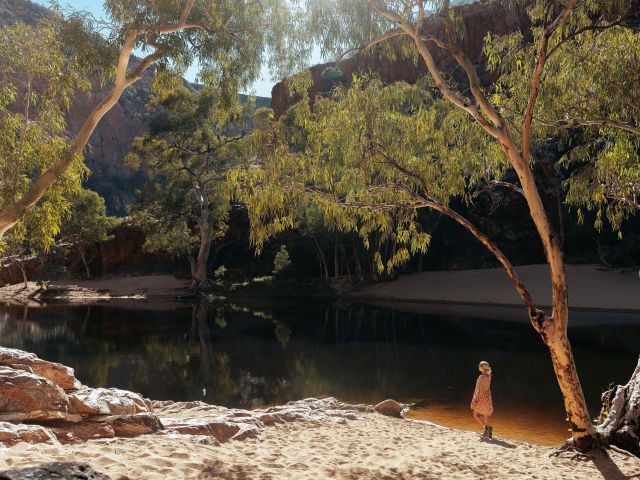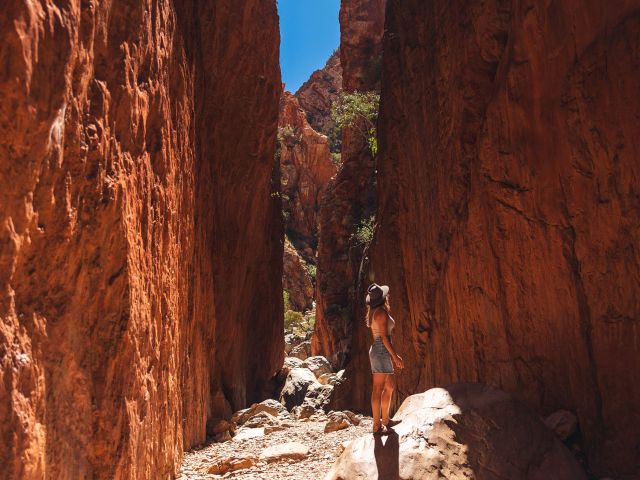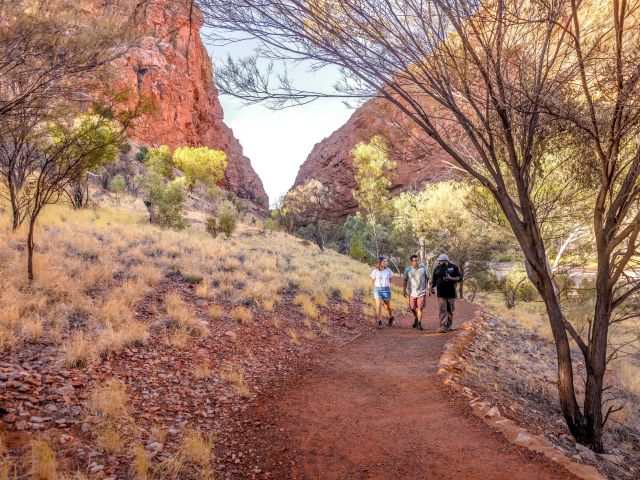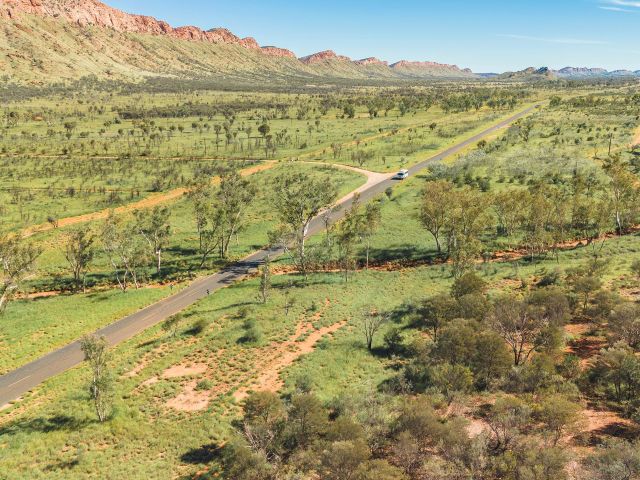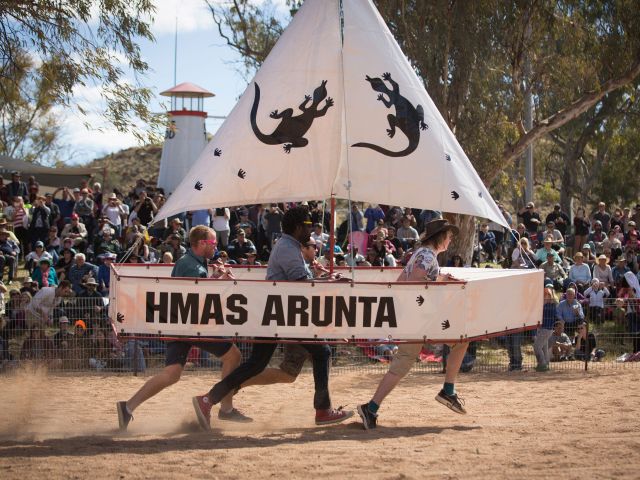The Tiwi Islands: a far-flung northern sanctuary where there’s art, footy and fishing fever abound.
Until recently, the Tiwi Islands have been just a blip on the tourism radar. While barramundi hunters and football selectors have been pretty hush-hush about their fertile hunting grounds, interest in this fascinating area and the Tiwi people who call it home is on the rise.
Before you take a ferry ride up from Darwin for a window into Top End Aboriginal culture and friendliness, you need to check out our guide to the islands below.
Why go to the Tiwi Islands?

Surrounded by azure waters 80 kilometres north of Darwin, the Tiwis – also known as ‘The Islands of Smiles’ for its residents’ joie de vivre – is an archipelago of 11 islands, with Bathurst and Melville the largest of these.
About 90 per cent of the Tiwi population is Aboriginal and, despite cohabitating with European settlers since the 1800s, Tiwi traditions and culture remain strong.
Locals date and marry according to skin group rules, cultural pride reigns supreme, and the three Tiwi passions – footy, art, and fishing – colour life on the islands. This trio of activities also captures the main drawcards of a journey here.
Art lovers, fishing fans, and Aussie Rules spectators find much to love about this tropical oasis.
How to get to the Tiwi Islands?

Take a 2.5-hour ride with SeaLink NT Ferries from Darwin to Wurrumiyanga on Bathurst Island, book a tour, or catch a 20-minute flight from Darwin Airport with Fly Tiwi.
When to visit the Tiwi Islands

Anglers can happily fish here all year round. Otherwise, the Top End dry season – which runs from May until September – offers travellers the most comfortable weather.
That said, the biggest event on the Tiwi calendar – the Footy Grand Final and Art Sale – is in July in 2025, and day tours operate from April to November.
The main event on the Tiwi calendar? That’d be the Footy Grand Final and Art Sale, happening in July 2025. But if you can’t make it to the big day in July, day tours run from April through to November.
Permits and other Tiwi Islands tips and tricks

Tiwi communities occupy Aboriginal-owned land, so if you’re travelling independently, rather than on an organised tour, you’ll need to apply for a permit through the Tiwi Land Council .
The exception to this rule applies to those visiting via SeaLink Ferry to Wurrumiyanga – you can wander around the cultural precinct here permit-free. Bring your own food as there are no cafes or takeaway food joints on the islands.
What to do on the Tiwi Islands?
ART COLLECTING

There’s a depth and playfulness inherent in the art made by the Tiwis’ stock of artists. For starters, Tiwi painters use ochre paints rather than acrylics, and ironwood carvings of totem animals – such as owls, cockatoos and brolgas – are in abundance, as are brightly coloured fabrics in a suite of whimsical designs.
Take a stroll around the islands’ three key art centres to absorb the whole gamut and pick up a Tiwi creation for keeps. Tiwi Design on Bathurst Island is a hub for screen-printed fabrics and ironwood animal carvings, among other gems.
At Jilamara on Melville Island, you can encounter ironwood carved birds and Tutini poles (for Pukamani, funeral ceremony), hand screen-printed textiles and some of the archipelago’s more famous artists, such as Timothy Cook, a former winner of the National Aboriginal and Torres Strait Islander Art Awards. Also on Melville Island, Munupi Arts is known for its pottery, as well as its works by female and emerging artists.
Check out our review of the Tiwi Island art tour to learn more.
FISHING

The Tiwi Islands have a reputation as a foolproof fishing destination. It doesn’t matter what the tides are doing, there’s always somewhere to hook a whopper.
Common catches include mangrove jacks, golden snapper, jewfish, coral trout, trevally, tuna, Spanish mackerel, and, of course, barramundi.
Hire a boat and camp if you prefer a more rustic, affordable and earthy alternative to a fishing lodge.
For a mere $10 per night, the islands offer three basic campsites for recreational anglers. You’ll find Camp Point and Robertson Creek on Melville Island, and Shaggy’s (Tinkanrow) on Bathurst Island.
Note: you’ll still need a permit for this option and should allow 30 working days for it to be processed.
TIWI ISLAND TOURS

SeaLink NT and AAT Kings all offer one-day tours that start with a ferry trip to Wurrumiyanga and include visits to Tiwi Design , Patakijiyali Museum (displaying traditional art and depictions of Tiwi dreaming stories), and the community’s Mission Precinct, which features a beautiful, art-lined wooden Catholic Church.
Tour highlights include making your own screen-printed fabric at Tiwi Design, witnessing a smoking ceremony and chatting with local Tiwi ladies while they weave baskets or paint.
TIME YOUR TRIP WITH A SPECIAL EVENT

The Tiwis’ annual footy final is taking place on 20 July 2025. It’s a huge day both for Tiwi Islanders and those keen to sample islander pride, art and football culture.
Travel by ferry for early morning art sales from all three Tiwi art centres, grab a gourmet burger and, when the afternoon arrives, take a seat at the Tiwi Islands Grand Final.
This high-octane event sells out almost every year – so make sure to book early.
Where to stay on the Tiwi Islands?

The accommodation in the Tiwi Islands is mostly tailored to fishing travellers, but it also caters for those keen on unplugging somewhere seriously remote and beautiful.
The best of Tiwi’s small cluster of lodges is the luxurious Tiwi Island Retreat on the outer edge of Bathurst Island. Getting here involves a 20-minute flight from Darwin, a 50-minute troopy ride, and a short boat trip.

Set on a sandy beach lined with towering coconut palms, the retreat has a pool, an expansive deck, shared bathrooms and coastal-styled rooms. It’s also known for its cocktail-drink-welcome, plus the friendliness of its skippers who lead you to the finest fishing spots (if fishing is your thing). There’s a two-night minimum stay and prices include food, transfers to Darwin and activities on the island.
Also on Bathurst Island, but at Wurrumiyanga (where the ferry arrives from Darwin), Tiwi Enterprises runs the Mantiyupwi Motel, featuring 30 rooms, each with an ensuite bathroom and kitchenette.
On Melville Island, Tiwi Islands Adventures operates the Melville Island Lodge, which can accommodate up to 20 guests. It sits on the waterfront in the tiny township of Milikapiti (Snake Bay). From Darwin, the lodge is a 30-minute flight away – or reachable by sea, if you’re taking the slow road.
Planning a tropical getaway? Make sure to include Tiwi Islands in your bucket list and go for a Tiwi Islands art tour.
Originally written by Kate Bettes with updates by Leah McLennan


